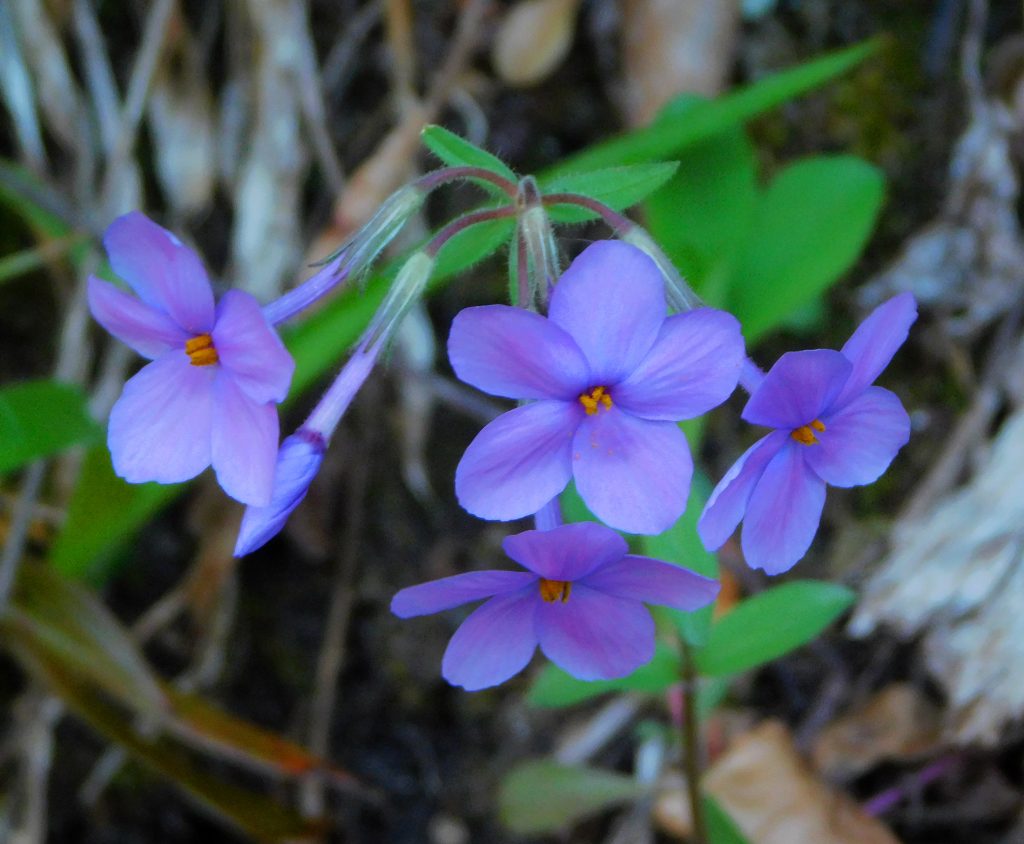

Today I’ll discuss things “creeping” and “wild”—creeping phlox and wild geranium.
First, let’s look at creeping phlox. This plant grows up to 12 inches tall, and the blooms that appear from April to June can be purple, lavender, or white. If you have not previously done so, I suggest that you bend over to smell the fragrance emitted by these lovely flowers. A perfume manufacturer would be challenged to make a scent equal to the fragrance of creeping phlox.
Multiple species of native phlox, and even a couple of non-native phloxes, have been identified in Great Smoky Mountains National Park. In reviewing the history of phlox, sources say the plant is native to North America and was exported to Europe. Later, it was reintroduced in America by European horticulturists.
The second plant that we will examine is wild geranium, which can grow from 12 to 28 inches tall. Its pink to purple blooms (which can also be white) appear from April to June, as is the case for creeping phlox.
Wild geranium cannot self-pollinate, so it depends on insects for pollination. Interestingly, lines on the petals of the bloom lead from the outer edge of the petal to center of the flower where the nectar is located. The seedpod resembles a bird’s head, and when the pod reaches a certain point, it bursts open sending the seeds in all directions for up to 30 feet. Most flower pollen is orange-yellow in color; however, pollen from the geranium is bright blue.

In the 1800s residents of the Appalachians used the plant to treat a children’s disease called “the flux.” Native Americans were said to use the plant to treat venereal diseases. Other medicinal uses of the plant were to treat diarrhea, hemorrhoids, gum disease, stomach ailments, swollen feet, and mouth sores, and to stop bleeding.
Two trails where you may see these flowers are Lower Mount Cammerer Trail and Porters Creek Trail. If you have a wildflower garden, you might want to try growing wild geraniums. My experience has been that this wildflower is hardy, spreads well, and holds its own with difficult, aggressive spreaders like exotic monkey grass.
If you have not gotten out into your national park yet to take advantage of finding, identifying, and enjoying wildflowers, please consider what Dr. Paul Dudley White was reported to have said about walking: “A brisk five-mile walk does an unhappy but otherwise healthy individual more good than all of the psychology and prescriptions in the world.” The mountains are calling you and me.
Subscribe to get the latest posts sent to your email.
The Great Smokies Welcome Center is located on U.S. 321 in Townsend, TN, 2 miles from the west entrance to Great Smoky Mountains National Park. Visitors can get information about things to see and do in and around the national park and shop from a wide selection of books, gifts, and other Smokies merchandise. Daily, weekly, and annual parking tags for the national park are also available.